I have quite a fondness for the south of France, even when the days are cold, crisp, and still. Perhaps in Provence the lavender in the heat can no longer tickle the nose, but the shimmering autumn colour can dazzle the eye as you drive through the rolling hills.
On our most recent trip my fiancé and I spent a few days visiting friends in a house we had rented about five years ago, positioned close to the edgy, colourful town of Roussillon. I wrote about it previously, a garden in provence. Our hosts, Didier and Philippe, share our love of gardens and art, and were keen to revisit the impressive vineyard, Chateau La Coste, not far from where they live, and very close to Aix-en-Provence.
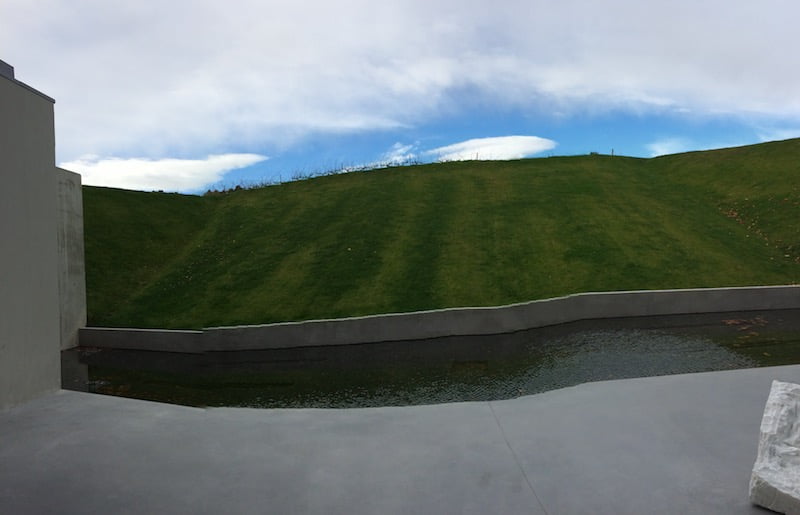
View from the Piano Building. Image, Edward Ohanessian
To ease us into our first Chateau La Coste experience, Didier led us, in convoy, not on a freeway, but through beautiful, rugged countryside, through very windy, bendy turns, and bountiful forests of orange and red-leaved trees. It was very cold, but the sky was clear and cornflour blue as we passed the jagged white cliffs that are so common in this area.
The entrance to Chateau La Coste is stylish and impressive, and a prelude to what was to come with clear signage in crisp, brushed aluminium. It is apparent that detail is important here, even down to the parking bays in the underground parking, defined with LED lights, not white stripes!
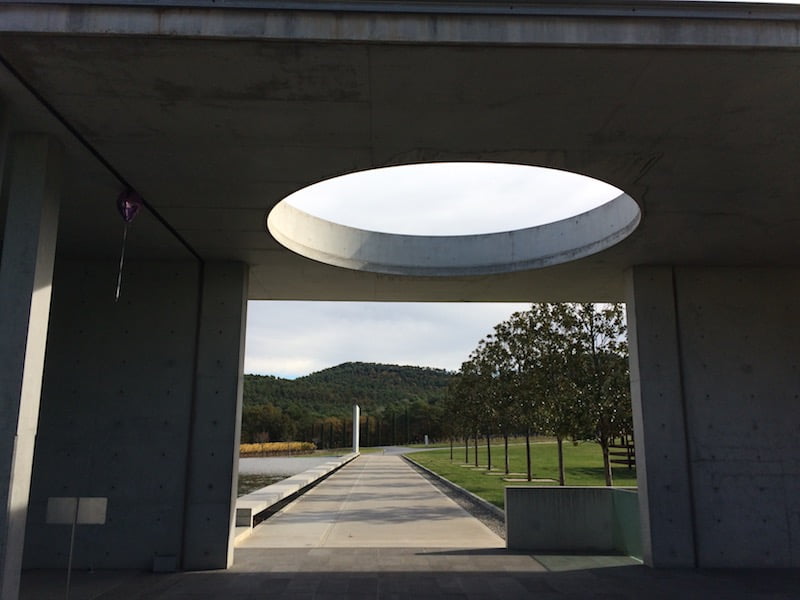
Landscape view from the Visitor Centre. Image, Edward Ohanessian
As we climbed the stairs, giving the elevator a miss, and passing the stunning double hippeastrum flower arrangement, we were greeted by a sleeping ginger cat, we would find out is called appropriately Caramel. We found ourselves in the Visitor Centre and our gaze was stolen by one of Louise Bourgeois famous spiders sitting in water in the forecourt of the centre. This sculpture is called Crouching Spider. The backdrop to this black sculpture is rolling, almost rhythmic, hills which glowed red, yellow, and orange.
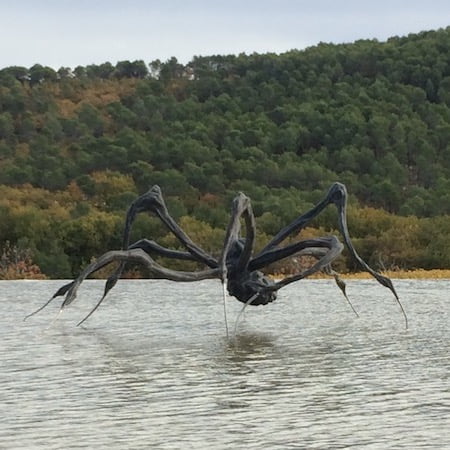
Louise Bourgeois Crouching Spider. Image, Edward Ohanessian
The Visitor Centre was walled in glass, so when you looked out in the other more sheltered direction, again in a pool of water, a sparkling stainless steel spire soars skyward. It is the work of Hiroshi Sugimoto and is called Mathematical Model 012.
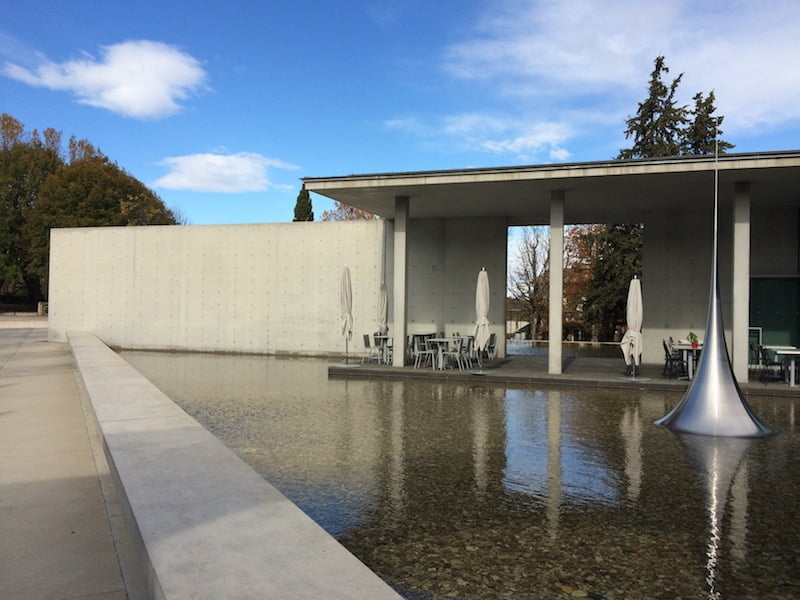
Visitor Centre with Mathematical Model. Image, Edward Ohanessian
Although we lunched at the estate, and the restaurant was housed in the same building as the Visitor Centre, we had come early so we could wander the grounds first. A link to a video about what can be seen at the estate is https://chateau-la-coste.com/en/walk/.
Away from the main building we passed The Kitchen Garden, designed by landscape designer, Louis Benech. It is a sculptural artwork in itself, and is effectively a potager design, formal in form, but frothy with all the vegetables, flowers and aromatic herbs that are used to create it. The plants are protected from the vicious Mistral winds that batter the south of France in the Autumn, by a row of mature cypress trees in the distance. The produce of the garden services the nearby restaurant. Here, as is typical in France, produce is seasonal.
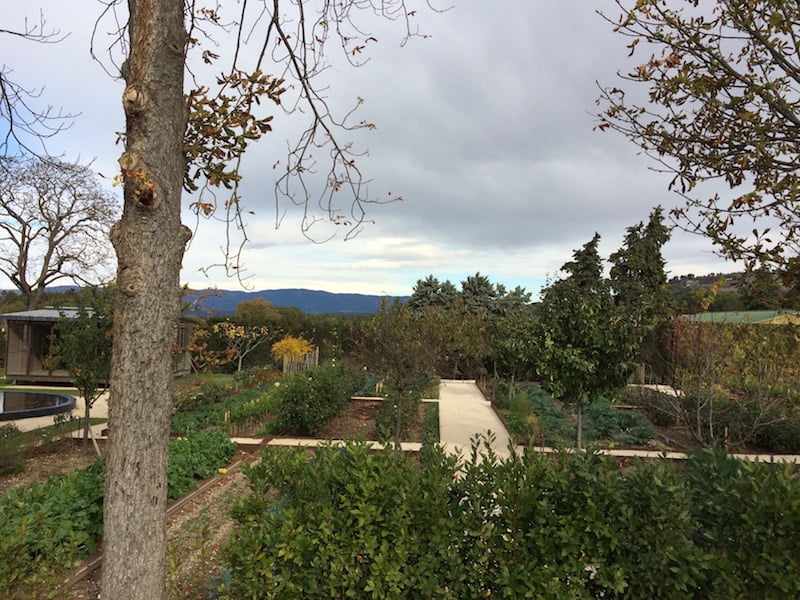
Kitchen Garden view. Image, Edward Ohanessian
Not far from the central buildings, but to the left there is a crazy, shaggy timber structure called The Music Pavilion. It is the work of Frank Gehry and is a place for concerts and musical events. I usually love Gehry’s work but found this one messy and ragged, almost broken.
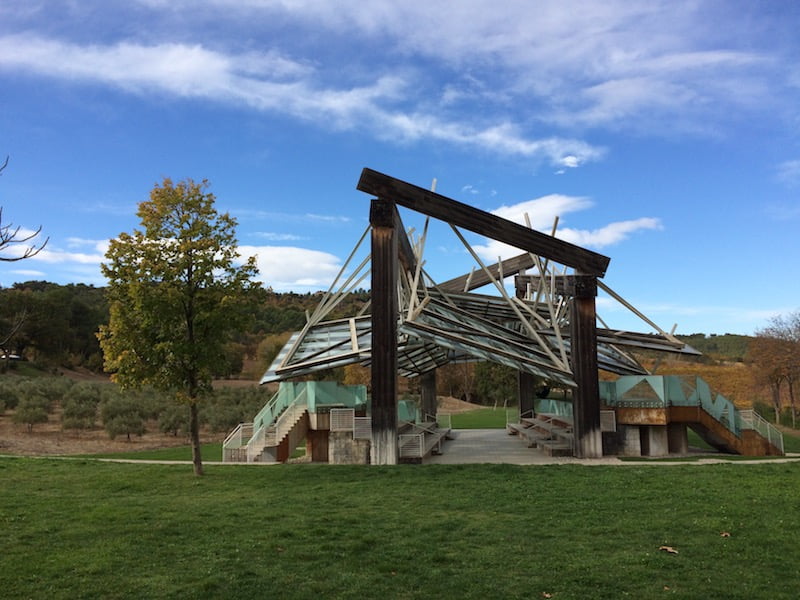
Gehry’s The Music Pavilion. Image, Edward Ohanessian
Fortunately, not far away, there was a giant black bronze bowl by Guggi situated at the edge of one of the vineyards, which is called Calix Meus Inebrians (My Cup Runneth Over, or My Cup Makes Me Drunk), which does impress and seems appropriate in a vineyard. Surrounded by trees, it is positioned to lead the eye to what looks like a dead tree a little way away.
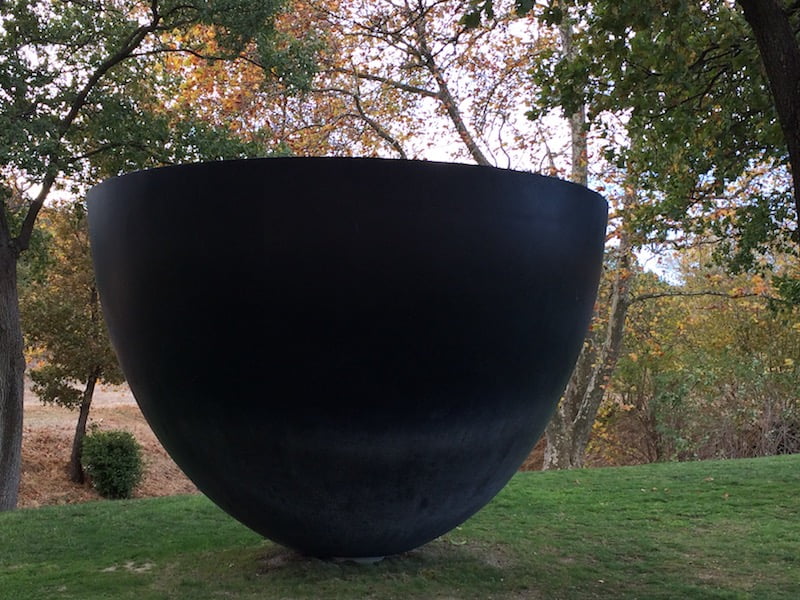
Calix Meus Inebrians. Image, Edward Ohanessian
The giant realistic looking dead tree is actually a sculpture made of bronze. It looks quite believable, except a massive rock is lodged in the highest fork. The bronze is an artwork by Giuseppe Penone, and is called Des Corps de Pierre (literally The Bodies of Stone).
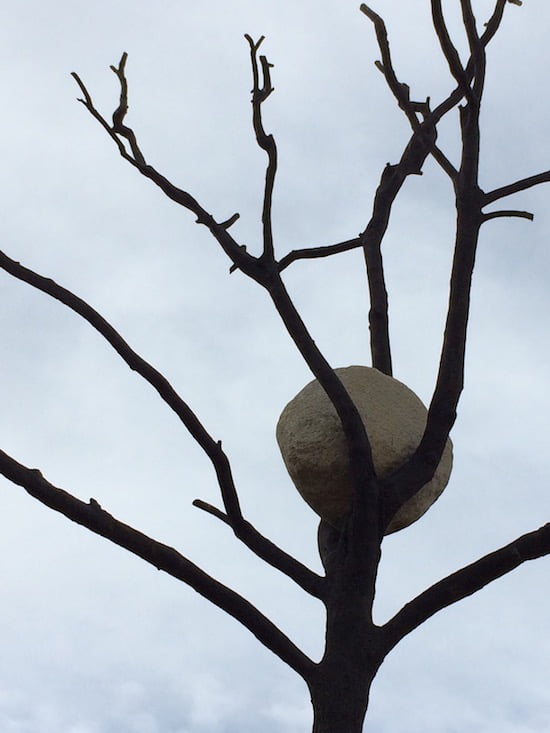
Des Corps de Pierre. Image, Edward Ohanessian
The tree sculpture leads the eye toward a Renzo Piano structure, bunkered into the hillside by massive planes of clipped lawn and white marble. The artworks inside, done by an apparently famous young Italian artist were underwhelming examples of conceptual art.
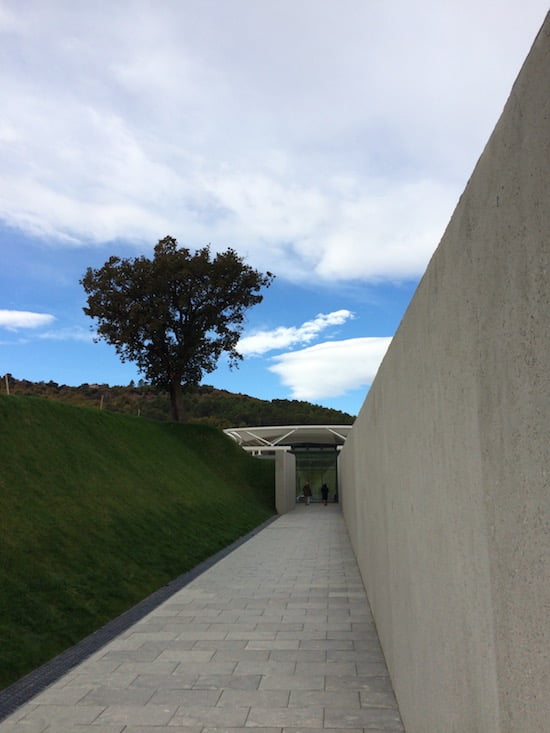
Piano Gallery Entrance. Image, Edward Ohanessian
In a completely different direction, and above us on a small hill, the landscape drew the eye toward a stunning stainless steel egg-shaped sculpture made by an American artist, Tom Shannon. It is called Drop. It was an interactive piece. You turn it, and the world around, including yourself, is reflected in it. It continues to turn long after you have stopped aiding it. It was particularly impressive on the day we were there, as the brilliant sunshine made it shimmer more brightly.
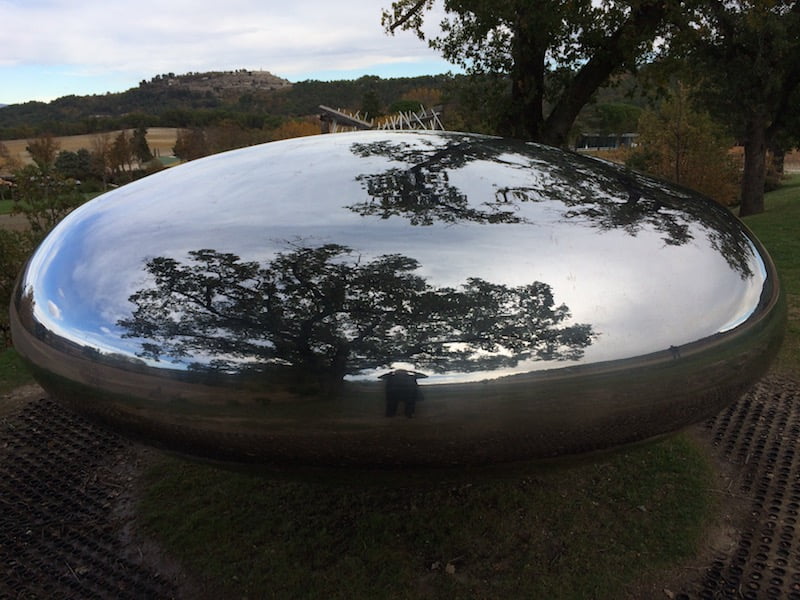
Drop by Tom Shannon. Image, Edward Ohanessian
Higher up the hill, through a very naturalistic provincial landscape the luxury hotel for the complex can be found. It is out of bounds to those who are just visiting the vineyard complex. Near it, however, nestled in woodland of oaks and groves of pine, is a sculpture/building by a Japanese artist, Tadao Ando.

Chapel. Image, Edward Ohanessian
It is a square building of rough timber, definitely reminiscent of a Japanese temple and called Chapel. It is full of narrow corridors, which encourage the visitor to see fascinating light and shadows, which are shed on the interior. There is a large space in the middle however, where sculptures extolling the error of humankind’s obsession with consumerism are displayed.
On our way back to the Visitor Centre, also designed by Tadao Ando, the woodland of local trees, complete with a stream (possibly natural), provided lovely shadows and sound as you descend.
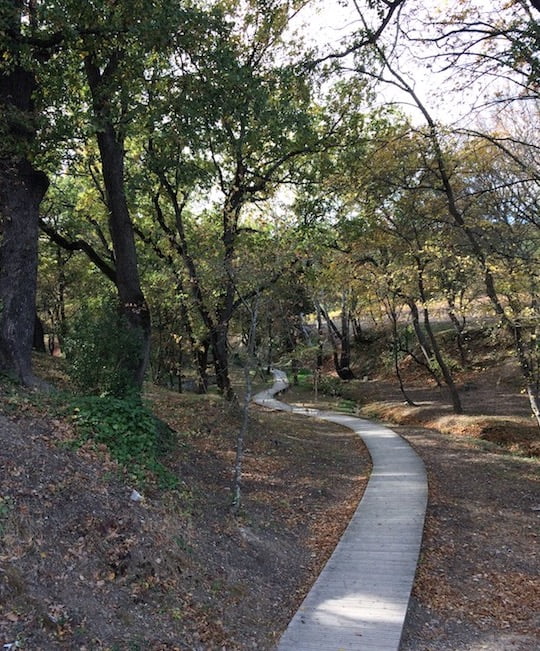
Path through the woodland. Image, Edward Ohanessian
Closer to the Centre, there was a garden with a few standard roses (all different cultivars) and espaliered apple trees, which seemed poorly planned and executed. It was hard to know if this was an intentional artwork or a glitch in the vineyard’s overall design.

View of the Visitor Centre & Alexander Calder’s sculpture. Image, Edward Ohanessian
After a most delicious lunch served with an exquisitely coloured rosé from the vineyard, we explored the grounds further. The Visitor Centre has great angles and planes, almost like a crisply folded paper plane. There are columns that lead away from the Centre and the flow of this row is completed with trees. I neglected to make a note of which tree, but from photos believe they are a form of evergreen magnolia.
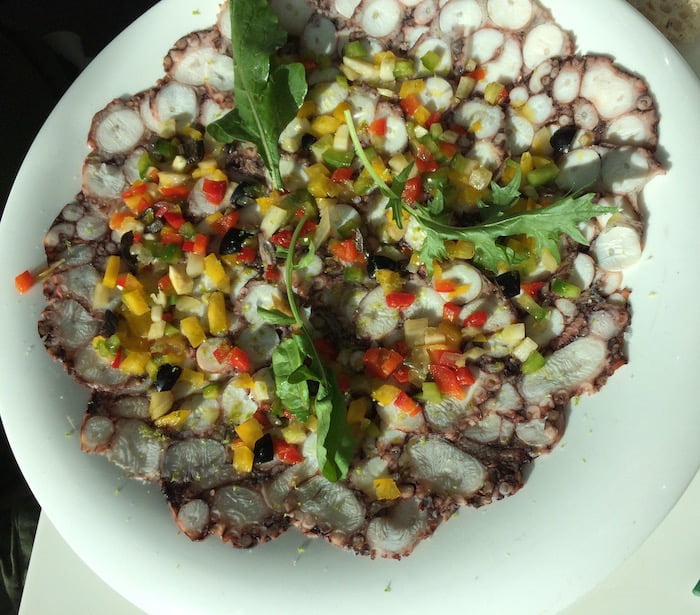
Octopus salad. Image, Edward Ohanessian
Chateau La Coste has much to offer a visitor, in art, landscape, food and wine. I believe it is a great destination, regardless of the time of year it is visited.
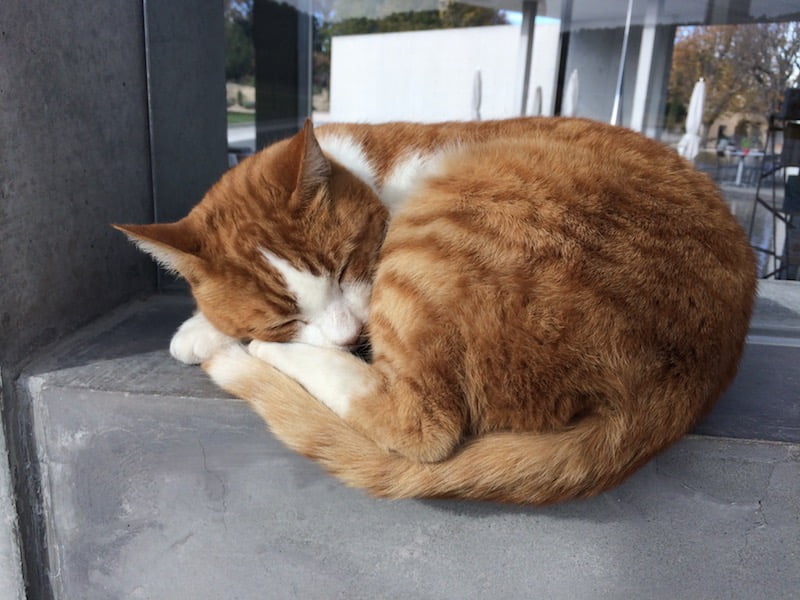
Caramel, the vineyard cat. Image, Edward Ohanessian
